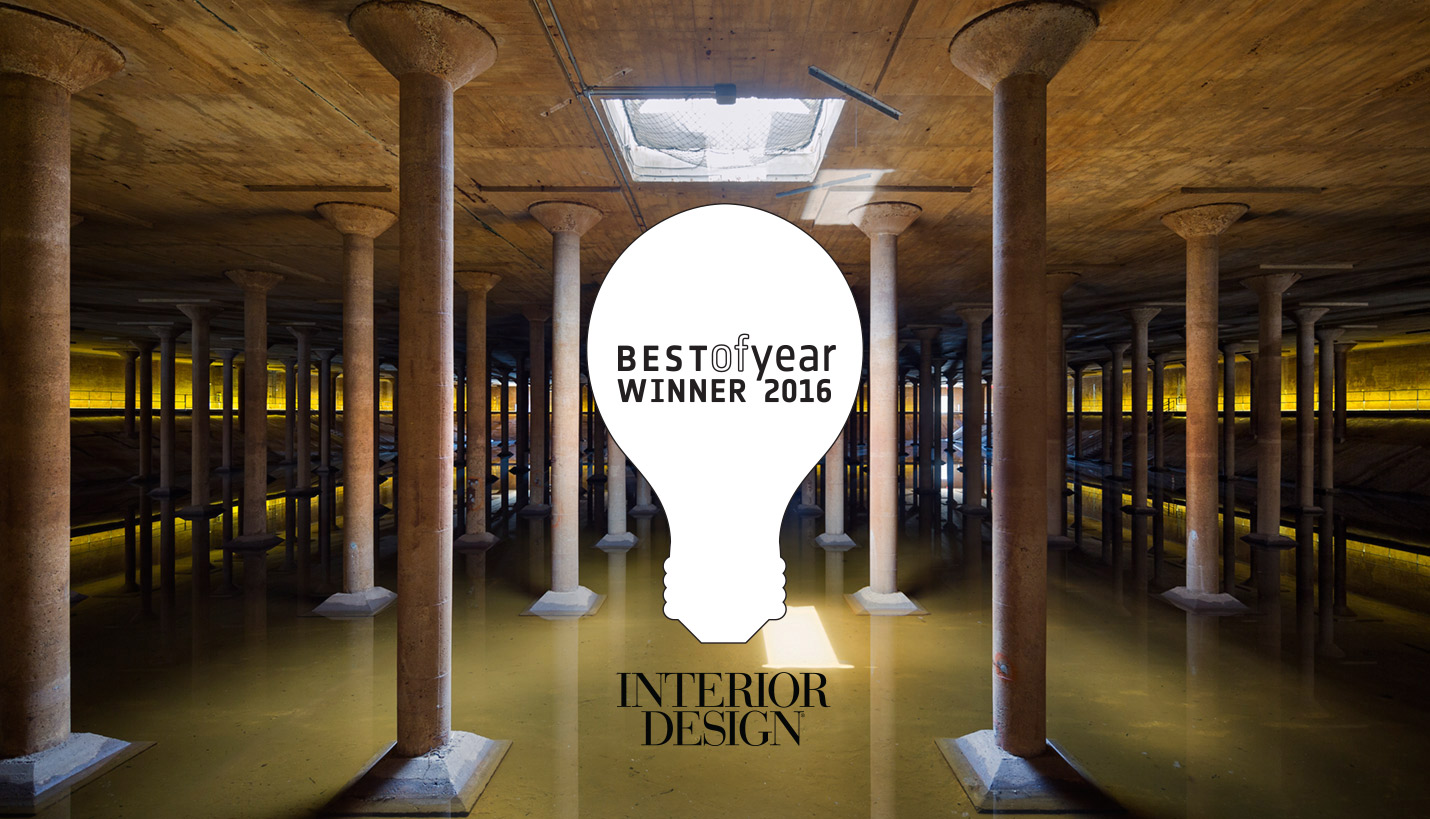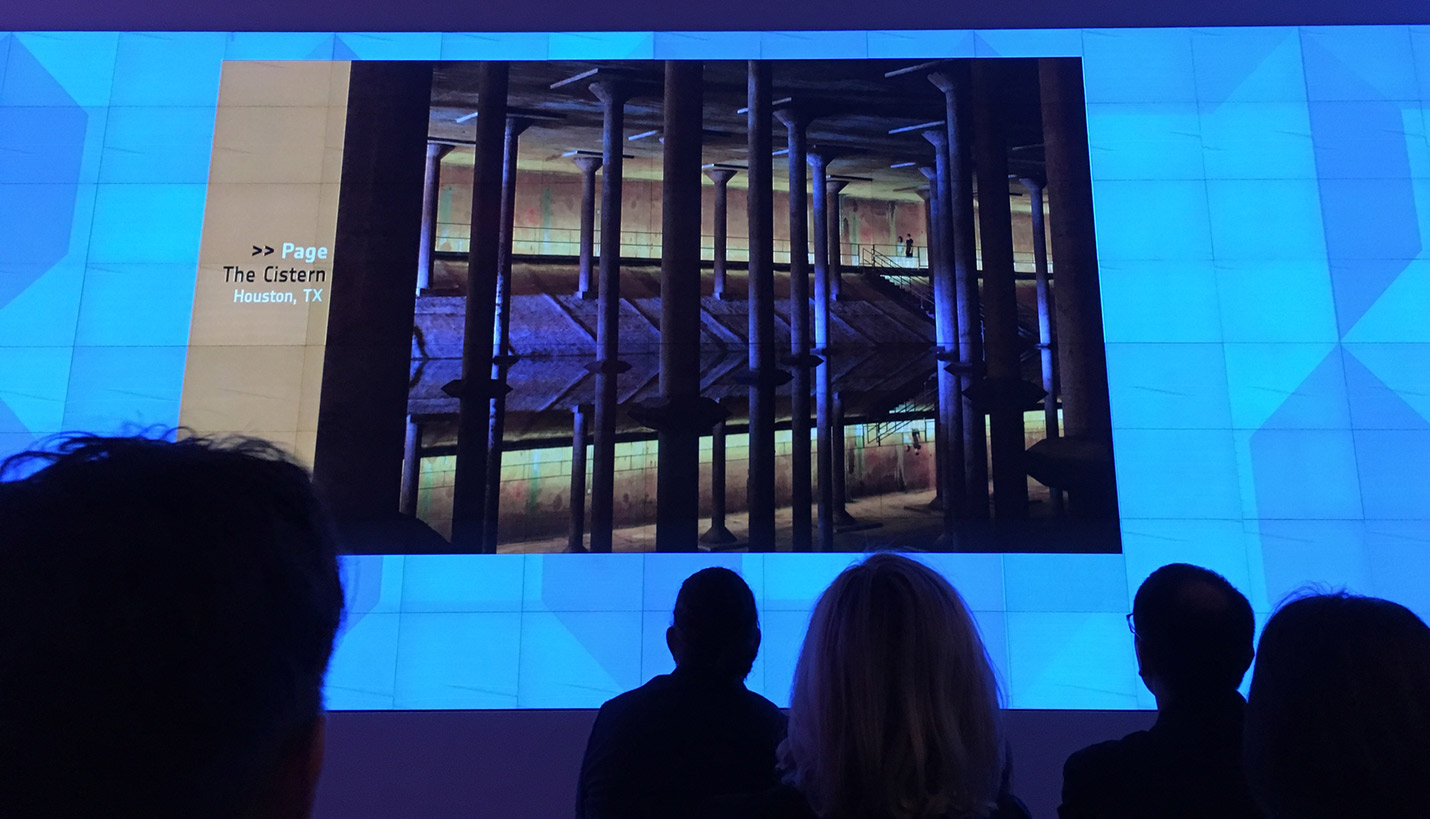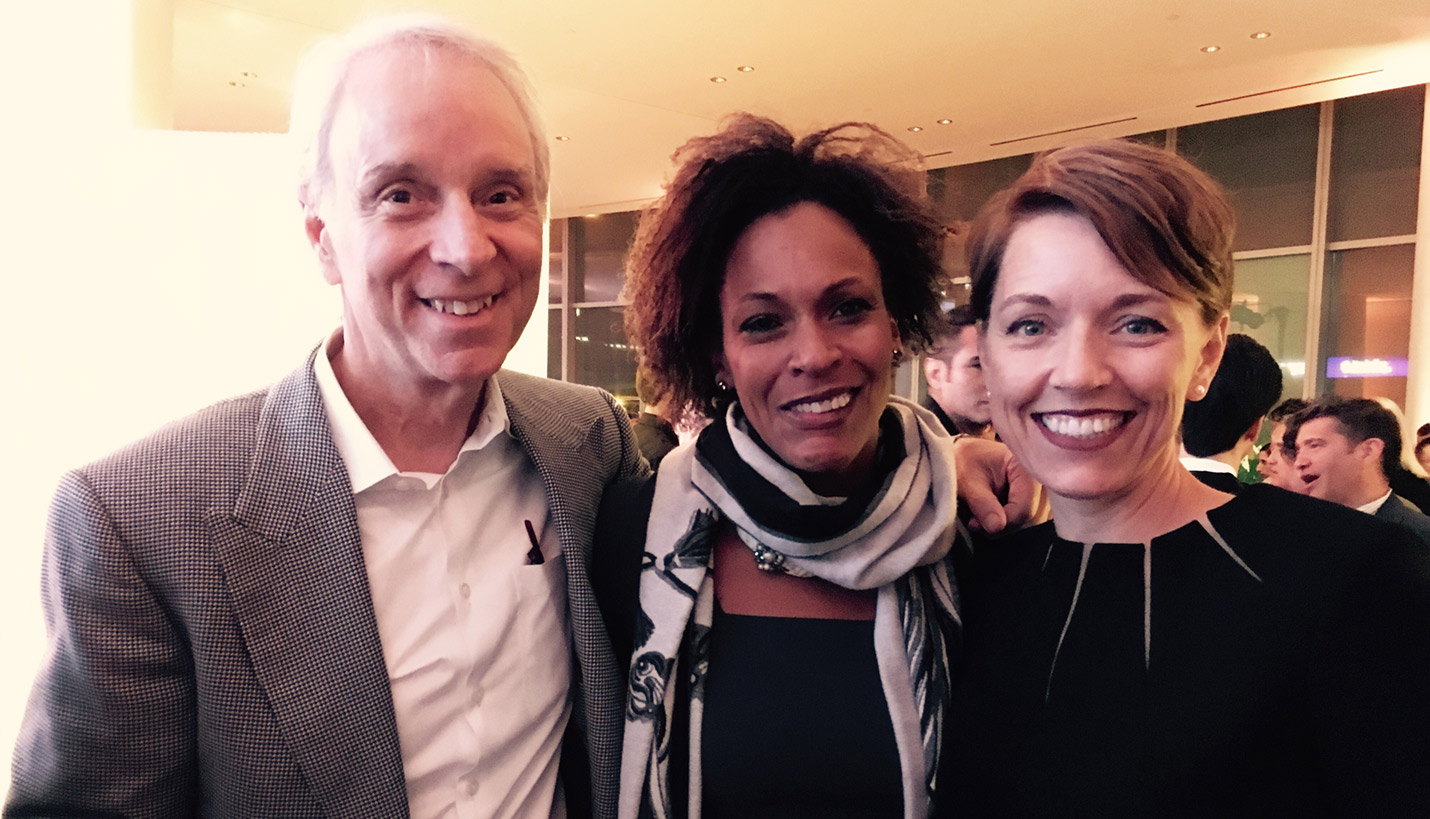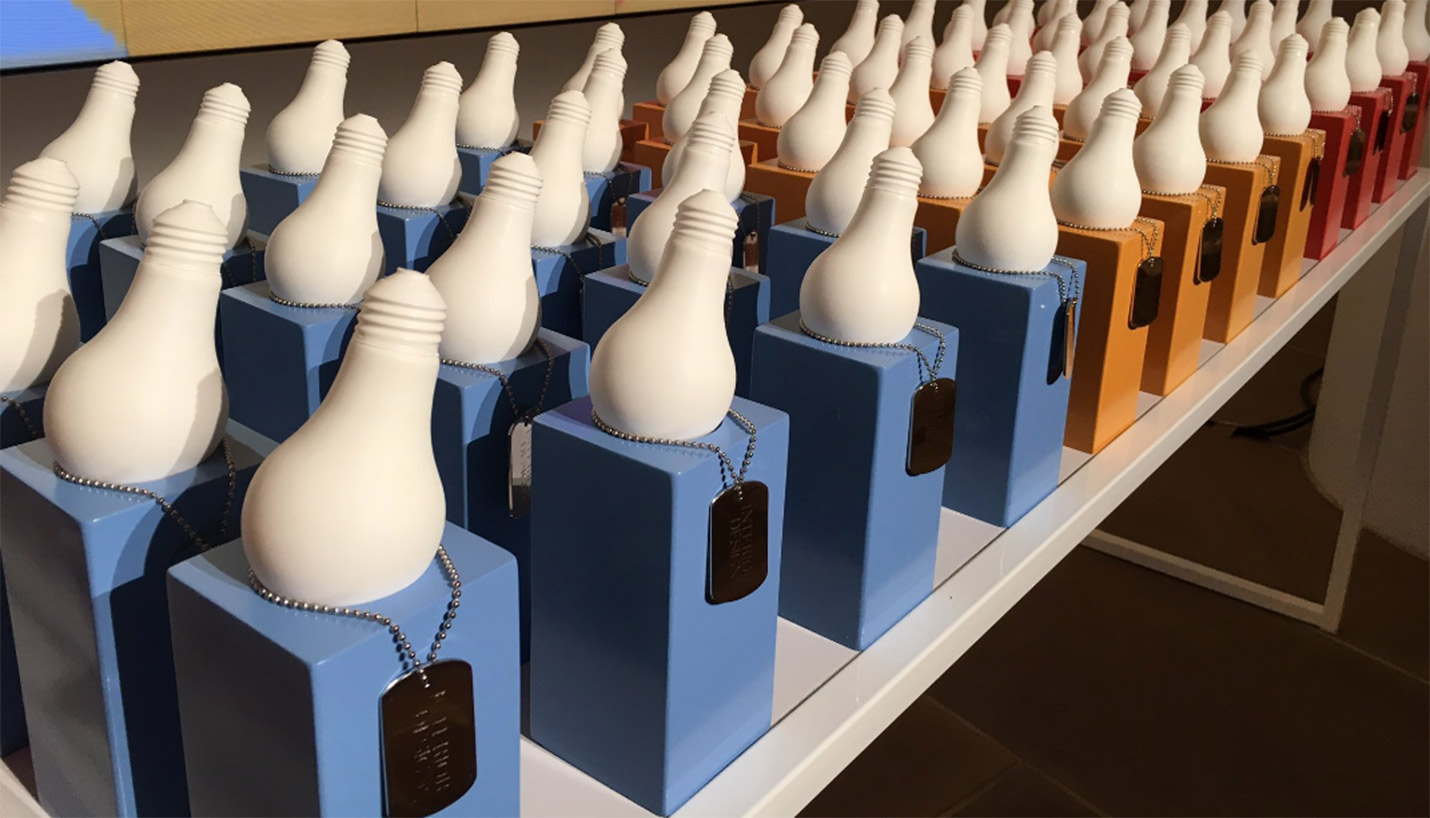The Cistern Brings Home Interior Design Best Of Year Award
An audience of over 900 people from the design community gathered at the state-of-the-art Frank Gehry design, IAC Building to learn the winners of the 11th annual Interior Design Best of Year (BoY) awards. The auditorium was standing room only, as the winners were announced and our Pagers in attendance were thrilled to accept the Pièce de Résistance trophy for The Cistern at Buffalo Bayou Park.
BoY is the design industry’s premiere design awards, honoring the most significant work of the year as well as recognizing designers, architects and manufacturers from around the globe. This year there were 2,016 entries from 38 different countries in 130 product and project categories! Two other Page projects had been named finalists: the Ottobock Headquarters in Austin for the Mid-Size Corporate category and The Hub at Austin Bergstrom International Airport in the Transportation category.
A defunct underground drinking water reservoir, The Cistern was being considered by the city of Houston for conversion to a commercial parking garage when Page Senior Principal Larry Speck and his colleagues on the design team for the adjacent Buffalo Bayou Park had the chance to view it. Today, it is one of the top visitor destinations in Houston.
Larry explains the impact of that first look, “[We] saw one of the most powerful and memorable industrial structures ever built in the U.S. The vastness of the space, its complete darkness except for the modest dose of light introduced by open hatches, the relentless rhythm of repetitive structural elements and the 17-second reverberation time that magnifies sound to an almost physical presence all conspire to create an extraordinary architectural experience.”
The team proposed to repurpose the space as a visitor destination that could accommodate installation art -- particularly light and sound. They worked with the non-profit client Buffalo Bayou Partnership to find a way to save it with the help of the Houston Arts Alliance and funding from a prominent foundation. The City of Houston also provided support and today, tours of the Cistern regularly sell out.
A “less is more” approach was taken to preserve The Cistern. Berms now surround the half-submerged perimeter walls on the outside so from the exterior, The Cistern disappears into the landscape like a low, flat hill. The visitor entrance is a curving tunnel clad with new splayed board-formed concrete walls. This allows eyes to slowly adjust to the dark interior and to reduce abrupt light spoilage of the space.
A soft, low line of LED lighting from the tunnel is built into a transparent handrail edging a delicate, unobtrusive walkway that was constructed around the entire perimeter. The fixtures are aimed down to provide direct safety lighting on the pathway and minimize compromise of the darkness of the 87,500sf, or 1.5 football fields, of interior space. Four fire egress doors and two moveable hatches in the roof permit adjustable penetration of natural light.
Its eight-inch thickened flat slab roof system is supported by 221 slender, round concrete columns with belled capitals and square bases. Concrete walls above the natural grade vary in thickness from eight to 18” and the walls of the subterranean portion are sloped inward. A constant depth of a few inches of water is maintained on the floor, creating dramatic reflections that emphasize the vastness of the space by making it seem double its actual height.
Pagers Larry Speck, Wendy Dunnam Tita and Erin Carlon were present to receive the award on behalf of the Page design team. To see a list of all the winners and finalists, click here.
12/01/2016













